- Home
- Walter Scott
Letters on Demonology and Witchcraft Page 10
Letters on Demonology and Witchcraft Read online
Page 10
It was not only with the spirits of the dead that the warlike people of the North made war without timidity, and successfully entered into suits of ejectment. These daring champions often braved the indignation even of the superior deities of their mythology, rather than allow that there existed any being before whom their boldness could quail. Such is the singular story how a young man of high courage, in crossing a desolate ridge of mountains, met with a huge waggon, in which the goddess, Freya (i.e., a gigantic idol formed to represent her), together with her shrine, and the wealthy offerings attached to it, was travelling from one district of the country to another. The shrine, or sanctuary of the idol, was, like a modern caravan travelling with a show, screened by boards and curtains from the public gaze, and the equipage was under the immediate guidance of the priestess of Freya, a young, good-looking, and attractive woman. The traveller naturally associated himself with the priestess, who, as she walked on foot, apparently was in no degree displeased with the company of a powerful and handsome young man, as a guide and companion on the journey. It chanced, however, that the presence of the champion, and his discourse with the priestess, was less satisfactory to the goddess than to the parties principally concerned. By a certain signal the divinity summoned the priestess to the sanctuary, who presently returned, with tears in her eyes and terror in her countenance, to inform her companion that it was the will of Freya that he should depart, and no longer travel in their company. "You must have mistaken the meaning of the goddess," said the champion; "Freya cannot have formed a wish so unreasonable as to desire I should abandon the straight and good road, which leads me directly on my journey, to choose precipitous paths and by-roads, where I may break my neck." "Nevertheless," said the priestess, "the goddess will be highly offended if you disobey her commands, nor can I conceal from you that she may personally assault you." "It will be at her own peril if she should be so audacious," said the champion, "for I will try the power of this axe against the strength of beams and boards." The priestess chid him for his impiety; but being unable to compel him to obey the goddess's mandate, they again relapsed into familiarity, which advanced to such a point that a clattering noise within the tabernacle, as of machinery put in motion, intimated to the travellers that Freya, who perhaps had some qualities in common with the classical Vesta, thought a personal interruption of this tête-à-tête ought to be deferred no longer. The curtains flew open, and the massive and awkward idol, who, we may suppose, resembled in form the giant created by Frankenstein, leapt lumbering from the carriage, and, rushing on the intrusive traveller, dealt him, with its wooden hands and arms, such tremendous blows, as were equally difficult to parry or to endure. But the champion was armed with a double-edged Danish axe, with which he bestirred himself with so much strength and activity, that at length he split the head of the image, and with a severe blow hewed off its left leg. The image of Freya then fell motionless to the ground, and the demon which had animated it fled yelling from the battered tenement. The champion was now victor; and, according to the law of arms, took possession of the female and the baggage. The priestess, the divinity of whose patroness had been by the event of the combat sorely lessened in her eyes, was now easily induced to become the associate and concubine of the conqueror. She accompanied him to the district whither he was travelling, and there displayed the shrine of Freya, taking care to hide the injuries which the goddess had received in the brawl. The champion came in for a share of a gainful trade driven by the priestess, besides appropriating to himself most of the treasures which the sanctuary had formerly contained. Neither does it appear that Freya, having, perhaps, a sensible recollection of the power of the axe, ever again ventured to appear in person for the purpose of calling her false stewards to account.
The national estimation of deities, concerning whom such stories could be told and believed, was, of course, of no deep or respectful character. The Icelanders abandoned Odin, Freya, Thor, and their whole pagan mythology, in consideration of a single disputation between the heathen priests and the Christian missionaries. The priests threatened the island with a desolating eruption of the volcano called Hecla, as the necessary consequence of the vengeance of their deities. Snorro, the same who advised the inquest against the ghosts, had become a convert to the Christian religion, and was present on the occasion, and as the conference was held on the surface of what had been a stream of lava, now covered with vegetable substances, he answered the priests with much readiness, "To what was the indignation of the gods owing when the substance on which we stand was fluid and scorching? Believe me, men of Iceland, the eruption of the volcano depends on natural circumstances now as it did then, and is not the engine of vengeance intrusted to Thor and Odin." It is evident that men who reasoned with so much accuracy concerning the imbecility of Odin and Thor were well prepared, on abandoning their worship, to consider their former deities, of whom they believed so much that was impious, in the light of evil demons.
But there were some particulars of the Northern creed in which it corresponded so exactly with that of the classics as leaves room to doubt whether the original Asæ, or Asiatics, the founders of the Scandinavian system, had, before their migration from Asia, derived them from some common source with those of the Greeks and Romans; or whether, on the other hand, the same proneness of the human mind to superstition has caused that similar ideas are adopted in different regions, as the same plants are found in distant countries without the one, as far as can be discovered, having obtained the seed from the others.
The classical fiction, for example, of the satyrs and other subordinate deities of wood and wild, whose power is rather delusive than formidable, and whose supernatural pranks intimate rather a wish to inflict terror than to do hurt, was received among the Northern people, and perhaps transferred by them to the Celtic tribes. It is an idea which seems common to many nations. The existence of a satyr, in the silvan form, is even pretended to be proved by the evidence of Saint Anthony, to whom one is said to have appeared in the desert. The Scottish Gael have an idea of the same kind, respecting a goblin called Ourisk, whose form is like that of Pan, and his attendants something between a man and a goat, the nether extremities being in the latter form. A species of cavern, or rather hole, in the rock, affords to the wildest retreat in the romantic neighbourhood of Loch Katrine a name taken from classical superstition. It is not the least curious circumstance that from this silvan deity the modern nations of Europe have borrowed the degrading and unsuitable emblems of the goat's visage and form, the horns, hoofs, and tail, with which they have depicted the author of evil when it pleased him to show himself on earth. So that the alteration of a single word would render Pope's well-known line more truly adapted to the fact, should we venture to read—
"And Pan to Satan lends his heathen horn."
We cannot attribute the transferrence of the attributes of the Northern satyr, or Celtic ourisk, to the arch-fiend, to any particular resemblance between the character of these deities and that of Satan. On the contrary, the ourisk of the Celts was a creature by no means peculiarly malevolent or formidably powerful, but rather a melancholy spirit, which dwelt in wildernesses far removed from men. If we are to identify him with the Brown Dwarf of the Border moors, the ourisk has a mortal term of life and a hope of salvation, as indeed the same high claim was made by the satyr who appeared to St. Anthony. Moreover, the Highland ourisk was a species of lubber fiend, and capable of being over-reached by those who understood philology. It is related of one of these goblins which frequented a mill near the foot of Loch Lomond, that the miller, desiring to get rid of this meddling spirit, who injured the machinery by setting the water on the wheel when there was no grain to be grinded, contrived to have a meeting with the goblin by watching in his mill till night. The ourisk then entered, and demanded the miller's name, and was informed that he was called Myself; on which is founded a story almost exactly like that of OUTIS in the "Odyssey," a tale which, though classic, is by no means an elegant or ingen
ious fiction, but which we are astonished to find in an obscure district, and in the Celtic tongue, seeming to argue some connexion or communication between these remote Highlands of Scotland and the readers of Homer in former days, which we cannot account for. After all, perhaps, some Churchman more learned than his brethren may have transferred the legend from Sicily to Duncrune, from the shores of the Mediterranean to those of Loch Lomond. I have heard it also told that the celebrated freebooter, Rob Roy, once gained a victory by disguising a part of his men with goat-skins, so as to resemble the ourisk or Highland satyr.
There was an individual satyr called, I think, Meming, belonging to the Scandinavian mythology, of a character different from the ourisk, though similar in shape, whom it was the boast of the highest champions to seek out in the solitudes which he inhabited. He was an armourer of extreme dexterity, and the weapons which he forged were of the highest value. But as club-law pervaded the ancient system of Scandinavia, Meming had the humour of refusing to work for any customer save such as compelled him to it with force of arms. He may be, perhaps, identified with the recusant smith who fled before Fingal from Ireland to the Orkneys, and being there overtaken, was compelled to forge the sword which Fingal afterwards wore in all his battles, and which was called the Son of the dark brown Luno, from the name of the armourer who forged it.[21]
From this it will appear that there were originals enough in the mythology of the Goths, as well as Celts, to furnish the modern attributes ascribed to Satan in later times, when the object of painter or poet was to display him in his true form and with all his terrors. Even the genius of Guido and of Tasso have been unable to surmount this prejudice, the more rooted, perhaps, that the wicked are described as goats in Scripture, and that the devil is called the old dragon. In Raffael's famous painting of the archangel Michael binding Satan, the dignity, power, and angelic character expressed by the seraph form an extraordinary contrast to the poor conception of a being who ought not, even in that lowest degradation, to have seemed so unworthy an antagonist. Neither has Tasso been more happy, where he represents the divan of darkness in the enchanted forest as presided over by a monarch having a huge tail, hoofs, and all the usual accompaniments of popular diablerie. The genius of Milton alone could discard all these vulgar puerilities, and assign to the author of evil the terrible dignity of one who should seem not "less than archangel ruined." This species of degradation is yet grosser when we take into consideration the changes which popular opinions have wrought respecting the taste, habits, powers, modes of tempting, and habits of tormenting, which are such as might rather be ascribed to some stupid superannuated and doting ogre of a fairy tale, than to the powerful-minded demon who fell through pride and rebellion, not through folly or incapacity.
Having, however, adopted our present ideas of the devil as they are expressed by his nearest acquaintances, the witches, from the accounts of satyrs, which seem to have been articles of faith both among the Celtic and Gothic tribes, we must next notice another fruitful fountain of demonological fancies. But as this source of the mythology of the Middle Ages must necessarily comprehend some account of the fairy folk, to whom much of it must be referred, it is necessary to make a pause before we enter upon the mystic and marvellous connexion supposed to exist between the impenitent kingdom of Satan and those merry dancers by moonlight.
LETTER IV.
The Fairy Superstition is derived from different sources—The Classical Worship of the Silvans, or Rural Deities, proved by Roman Altars discovered—The Gothic Duergar, or Dwarfs—Supposed to be derived from the Northern Laps, or Fins—"The Niebelungen-Lied"—King Laurin's Adventure—Celtic Fairies of a gayer character, yet their pleasures empty and illusory—Addicted to carry off Human Beings, both Infants and Adults—Adventures of a Butler in Ireland—The Elves supposed to pay a Tax to Hell—The Irish, Welsh, Highlanders, and Manxmen held the same belief—It was rather rendered more gloomy by the Northern Traditions—Merlin and Arthur carried off by the Fairies—Also Thomas of Erceldoune—His Amour with the Queen of Elfland—His re-appearance in latter times—Another account from Reginald Scot—Conjectures on the derivation of the word Fairy.
We may premise by observing, that the classics had not forgotten to enrol in their mythology a certain species of subordinate deities, resembling the modern elves in their habits. Good old Mr. Gibb, of the Advocates' Library (whom all lawyers whose youth he assisted in their studies, by his knowledge of that noble collection, are bound to name with gratitude), used to point out, amongst the ancient altars under his charge, one which is consecrated, Diis campestribus, and usually added, with a wink, "The fairies, ye ken."[22] This relic of antiquity was discovered near Roxburgh Castle, and a vicinity more delightfully appropriate to the abode of the silvan deities can hardly be found.
Two rivers of considerable size, made yet more remarkable by the fame which has rendered them in some sort classical, unite their streams beneath the vestiges of an extensive castle, renowned in the wars with England, and for the valiant, noble, and even royal blood, which has been shed around and before it—a landscape ornamented with the distant village and huge abbey tower of Kelso, arising out of groves of aged trees—the modern mansion of Fleurs, with its terrace, its woods, and its extensive lawn—form altogether a kingdom for Oberon and Titania to reign in, or any spirit who, before their time, might love scenery, of which the majesty, and even the beauty, impress the mind with a sense of awe mingled with pleasure. These silvans, satyrs, and fauns with whom superstition peopled the lofty banks and tangled copses of this romantic country, were obliged to give place to deities very nearly resembling themselves in character, who probably derive some of their attributes from their classic predecessors, although more immediately allied to the barbarian conquerors. We allude to the fairies, which, as received into the popular creed, and as described by the poets who have made use of them as machinery, are certainly among the most pleasing legacies of fancy.
Dr. Leyden, who exhausted on this subject, as upon most others, a profusion of learning, found the first idea of the elfin people in the Northern opinions concerning the duergar, or dwarfs.[23] These were, however, it must be owned, spirits of a coarser sort, more laborious vocation, and more malignant temper, and in all respects less propitious to humanity, than the fairies (properly so called), which were the invention of the Celtic people, and displayed that superiority of taste and fancy which, with the love of music and poetry, has been generally ascribed to their race, through its various classes and modifications.
In fact, there seems reason to conclude that these duergar were originally nothing else than the diminutive natives of the Lappish, Lettish, and Finnish nations, who, flying before the conquering weapons of the Asæ, sought the most retired regions of the North, and there endeavoured to hide themselves from their Eastern invaders. They were a little, diminutive race, but possessed of some skill probably in mining or smelting minerals, with which the country abounds. Perhaps also they might, from their acquaintance with the changes of the clouds, or meteorological phenomena, be judges of weather, and so enjoy another title to supernatural skill. At any rate, it has been plausibly supposed that these poor people, who sought caverns and hiding-places from the persecution of the Asæ, were in some respects compensated for inferiority in strength and stature by the art and power with which the superstition of the enemy invested them. These oppressed yet dreaded fugitives obtained, naturally enough, the character of the German spirits called Kobold, from which the English goblin and the Scottish bogle, by some inversion and alteration of pronunciation, are evidently derived.
The Kobolds were a species of gnomes, who haunted the dark and solitary places, and were often seen in the mines, where they seemed to imitate the labours of the miners, and sometimes took pleasure in frustrating their objects and rendering their toil unfruitful. Sometimes they were malignant, especially if neglected or insulted; but sometimes also they were indulgent to individuals whom they took under their protection. When
a miner, therefore, hit upon a rich vein of ore, the inference commonly was, not that he possessed more skill, industry, or even luck, than his fellow-workmen, but that the spirits of the mine had directed him to the treasure. The employment and apparent occupation of these subterranean gnomes or fiends, led very naturally to identify the Fin, or Laplander, with the Kobold; but it was a bolder stretch of the imagination which confounded this reserved and sullen race with the livelier and gayer spirit which bears correspondence with the British fairy. Neither can we be surprised that the duergar, ascribed by many persons to this source, should exhibit a darker and more malignant character than the elves that revel by moonlight in more southern climates.

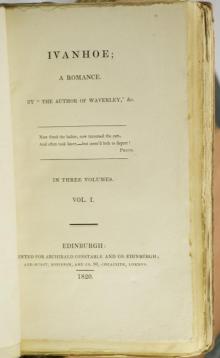 Ivanhoe: A Romance
Ivanhoe: A Romance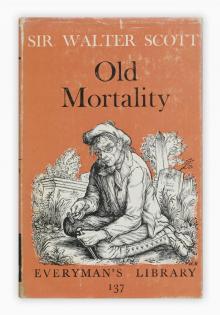 Old Mortality, Complete
Old Mortality, Complete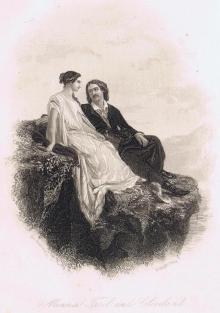 The Pirate
The Pirate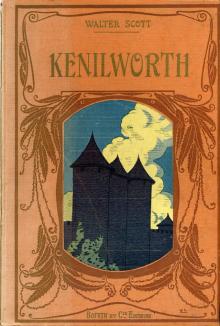 Kenilworth
Kenilworth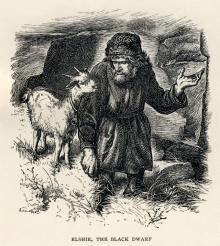 The Black Dwarf
The Black Dwarf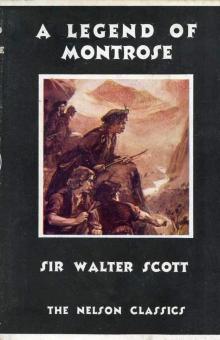 A Legend of Montrose
A Legend of Montrose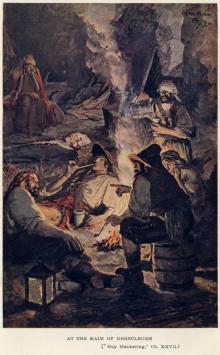 The Monastery
The Monastery The Bride of Lammermoor
The Bride of Lammermoor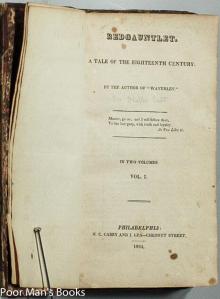 Redgauntlet: A Tale Of The Eighteenth Century
Redgauntlet: A Tale Of The Eighteenth Century St. Ronan's Well
St. Ronan's Well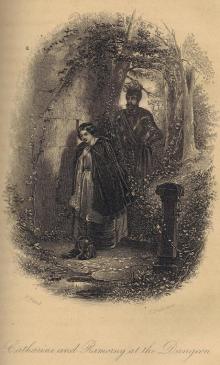 The Fair Maid of Perth; Or, St. Valentine's Day
The Fair Maid of Perth; Or, St. Valentine's Day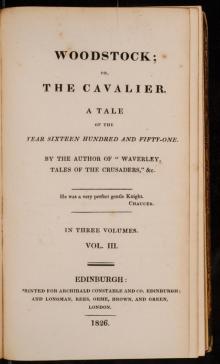 Woodstock; or, the Cavalier
Woodstock; or, the Cavalier_preview.jpg) Anne of Geierstein; Or, The Maiden of the Mist. Volume 1 (of 2)
Anne of Geierstein; Or, The Maiden of the Mist. Volume 1 (of 2)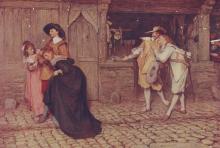 Peveril of the Peak
Peveril of the Peak Waverley; Or, 'Tis Sixty Years Since
Waverley; Or, 'Tis Sixty Years Since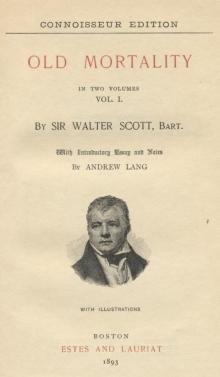 Old Mortality, Volume 1.
Old Mortality, Volume 1. Waverley Novels — Volume 12
Waverley Novels — Volume 12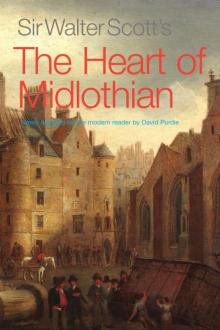 The Heart of Mid-Lothian, Complete
The Heart of Mid-Lothian, Complete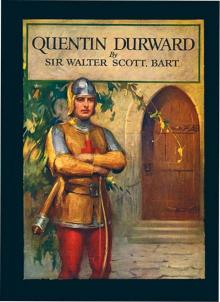 Quentin Durward
Quentin Durward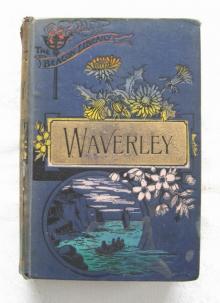 Waverley; Or 'Tis Sixty Years Since — Complete
Waverley; Or 'Tis Sixty Years Since — Complete Guy Mannering; or, The Astrologer — Complete
Guy Mannering; or, The Astrologer — Complete Rob Roy — Complete
Rob Roy — Complete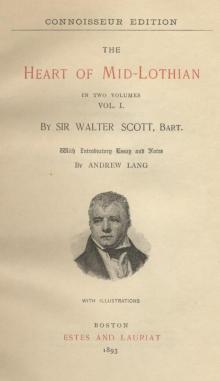 The Heart of Mid-Lothian, Volume 2
The Heart of Mid-Lothian, Volume 2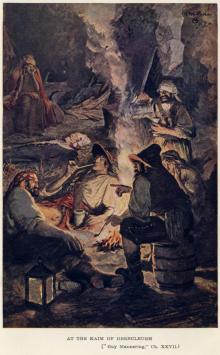 Guy Mannering, Or, the Astrologer — Complete
Guy Mannering, Or, the Astrologer — Complete_preview.jpg) Anne of Geierstein; Or, The Maiden of the Mist. Volume 2 (of 2)
Anne of Geierstein; Or, The Maiden of the Mist. Volume 2 (of 2)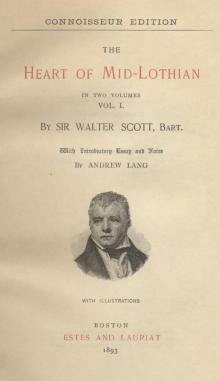 The Heart of Mid-Lothian, Volume 1
The Heart of Mid-Lothian, Volume 1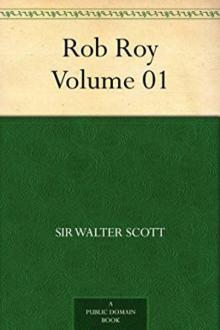 Rob Roy — Volume 01
Rob Roy — Volume 01 Waverley; Or, 'Tis Sixty Years Since — Volume 2
Waverley; Or, 'Tis Sixty Years Since — Volume 2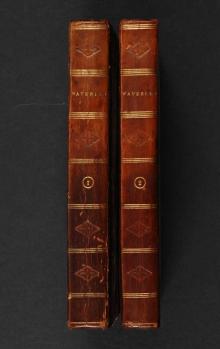 Waverley; Or, 'Tis Sixty Years Since — Volume 1
Waverley; Or, 'Tis Sixty Years Since — Volume 1 Guy Mannering, Or, the Astrologer — Volume 01
Guy Mannering, Or, the Astrologer — Volume 01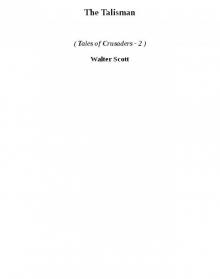 The Talisman toc-2
The Talisman toc-2 Rob Roy
Rob Roy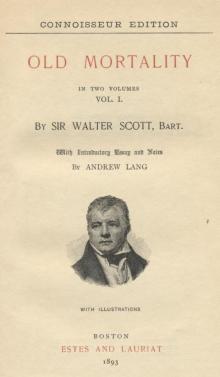 Old Mortality, Volume 2.
Old Mortality, Volume 2. The Betrothed
The Betrothed Waverley
Waverley The Surgeon's Daughter
The Surgeon's Daughter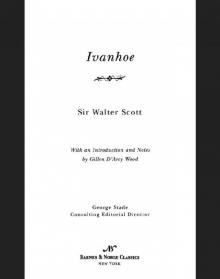 Ivanhoe (Barnes & Noble Classics Series)
Ivanhoe (Barnes & Noble Classics Series) The Antiquary
The Antiquary Letters on Demonology and Witchcraft
Letters on Demonology and Witchcraft Trial of Duncan Terig
Trial of Duncan Terig Redgauntlet
Redgauntlet My Aunt Margaret's Mirror
My Aunt Margaret's Mirror Guy Mannering or The Astrologer
Guy Mannering or The Astrologer Marmion
Marmion The Tapestried Chamber, and Death of the Laird's Jock
The Tapestried Chamber, and Death of the Laird's Jock Chronicles of the Canongate
Chronicles of the Canongate The Fair Maid of Perth or St. Valentine's Day
The Fair Maid of Perth or St. Valentine's Day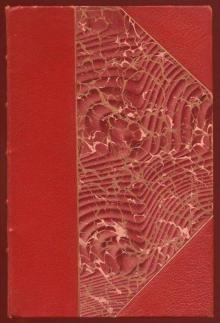 The Heart of Mid-Lothian
The Heart of Mid-Lothian Lady of the Lake
Lady of the Lake